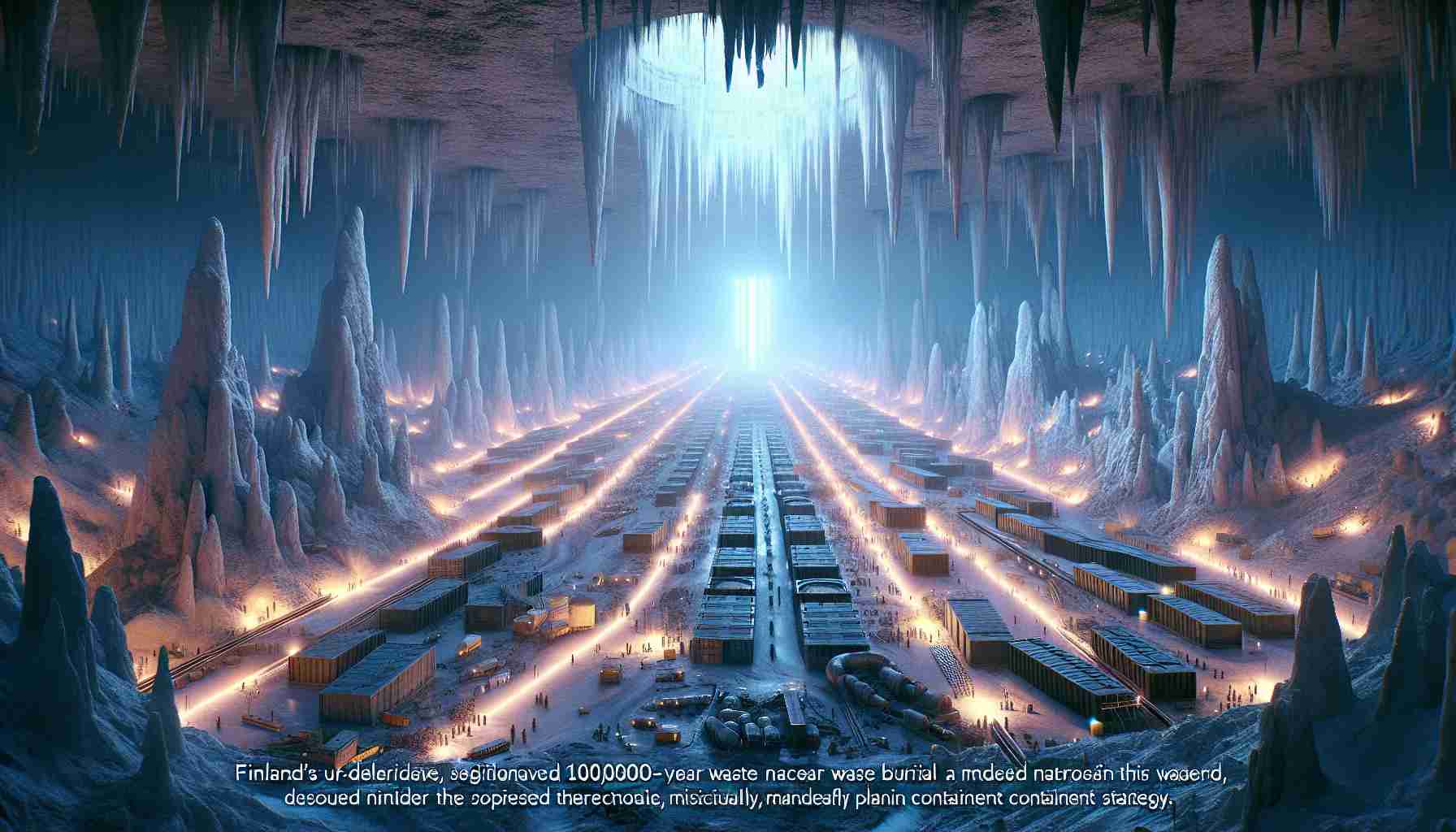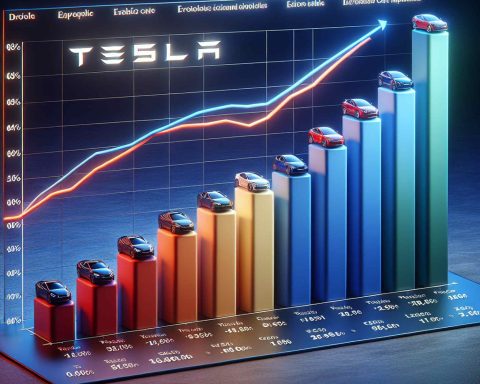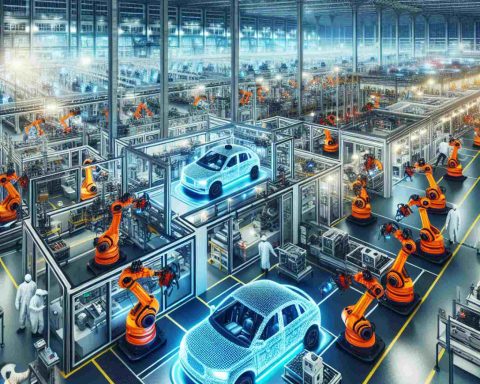Groundbreaking Nuclear Waste Facility in Finland
In a pioneering effort, Finland is set to “seal the vault” for nuclear waste storage, marking a historic milestone in energy management. Situated in Eurajoki, this facility, known as Onkalo, is designed to entomb spent nuclear fuel for an astonishing 100,000 years, effectively prohibiting human access for the next 4,000 generations. This monumental project, with an investment of approximately £860 million, is being closely observed by other nations eager for innovative nuclear waste solutions.
Onkalo, located over 1,400 feet below the surface, will serve as a permanent repository for high-level radioactive waste. Being a first-of-its-kind, it is considered an exemplar for global waste management strategies. From 2025, this subterranean complex will be inaccessible, ensuring that the dangerous materials it contains remain undisturbed.
Visitors to the site recall a sense of foreboding as they navigated through the dark, narrow tunnels, often sharing their unease about the long-term implications of burying radioactive waste so deep. Equipped with safety gear, they descended into the depths, witnessing the stark and raw beauty of the bare bedrock walls illuminated only by their flashlights.
Posiva Oy, the company behind this project, utilizes a meticulous system to secure the waste within robust canisters made of cast iron and copper, encased further in protective bentonite clay. With plans to commence actual disposal operations in the coming years, Finland’s Onkalo facility stands as a noteworthy achievement in the safe and sustainable handling of nuclear waste.
The Hidden Impact: How Finland’s Nuclear Waste Facility Shapes Communities and Policies
In an era marked by technological advancements, Finland’s Onkalo nuclear waste facility is not just a singular achievement in energy management but a symbol of evolving perceptions around nuclear energy and waste disposal. As the world observes this ambitious project, it raises critical questions about the interaction between environmental policies, community responses, and global energy strategies.
Community Engagement and Concerns
One of the most interesting aspects of Onkalo is the local community’s involvement in the decision-making process. Unlike many large-scale energy projects, where local voices often go unheard, Finnish citizens have been actively included in discussions surrounding the nuclear waste facility. This engagement not only fosters a sense of ownership but also helps mitigate fears associated with nuclear waste. Nonetheless, there remains a palpable sense of anxiety among residents about the long-term safety of the facility and the potential risks of seismic activity or human error.
The Controversy of Long-Term Storage
Despite Onkalo’s advanced safety measures, it has sparked debate about the ethics of burying nuclear waste for 100,000 years. Critics argue that it is irresponsible to assume technology will remain unchanged for millennia and question whether future generations will have the ability and means to manage the risks involved. This controversy challenges Finland and other nations to consider alternatives to deep geological storage, such as reprocessing spent fuel or developing new technologies.
Global Implications and Learning
Onkalo stands as a potential model for countries grappling with nuclear waste, as its construction represents a significant commitment to sustainable practices. Countries such as Sweden, France, and the United States, which are actively looking for enduring solutions to their nuclear waste challenges, are closely monitoring Finland’s progress. The lessons learned from Onkalo’s construction and operational strategies could inform global policies and encourage international cooperation on nuclear waste management.
Environmental Impact and Climate Change
Another dimension of the Onkalo project is its contribution to the broader discussion on energy sustainability. Nuclear energy is often viewed as a low-carbon alternative to fossil fuels, playing a crucial role in efforts to mitigate climate change. The secure management of nuclear waste also reflects a commitment to responsible resource use, underlining the complex relationship between renewable energy sources and their byproducts. As countries work towards reducing carbon footprints, the successful operation of Onkalo may alleviate some fears, making nuclear energy a more viable option globally.
Frequently Asked Questions
Q: How does the Onkalo facility ensure the safety of the nuclear waste?
A: Onkalo employs a multi-layered approach, utilizing robust canisters made from cast iron and copper, encased in bentonite clay, to protect against leakage and environmental hazards.
Q: What happens if there is an earthquake or natural disaster?
A: The facility has been designed to withstand geological activity, and extensive geological surveys were conducted to select the safest location. However, critics continue to raise concerns about unforeseen events over such a long period.
Q: Are there alternative solutions to nuclear waste management?
A: Yes, some countries are exploring reprocessing spent fuel or investing in next-generation nuclear technologies, like small modular reactors (SMRs), which may reduce the volume and lifespan of radioactive waste.
As Finland moves forward with its plans, the ramifications of the Onkalo project will ripple across energy policies and community attitudes, shaping the future of nuclear energy management. The lessons learned here will likely resonate for generations, influencing how we perceive and handle the dichotomy of sustainable energy and environmental stewardship. For more information on Finland’s energy policies, you can visit Energiavirasto.












